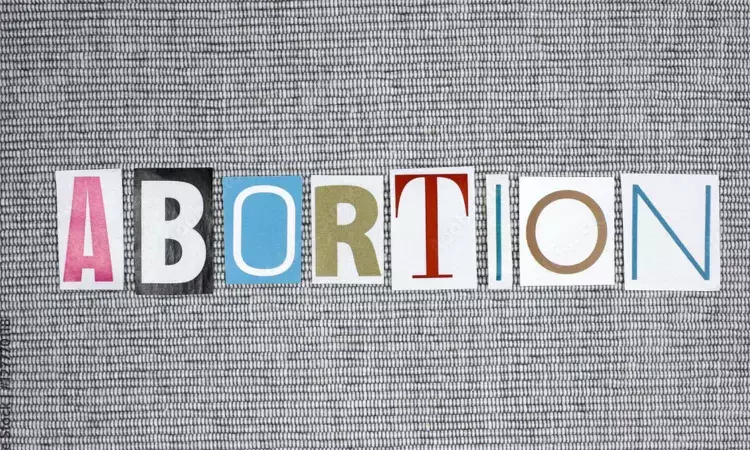- Home
- Medical news & Guidelines
- Anesthesiology
- Cardiology and CTVS
- Critical Care
- Dentistry
- Dermatology
- Diabetes and Endocrinology
- ENT
- Gastroenterology
- Medicine
- Nephrology
- Neurology
- Obstretics-Gynaecology
- Oncology
- Ophthalmology
- Orthopaedics
- Pediatrics-Neonatology
- Psychiatry
- Pulmonology
- Radiology
- Surgery
- Urology
- Laboratory Medicine
- Diet
- Nursing
- Paramedical
- Physiotherapy
- Health news
- Fact Check
- Bone Health Fact Check
- Brain Health Fact Check
- Cancer Related Fact Check
- Child Care Fact Check
- Dental and oral health fact check
- Diabetes and metabolic health fact check
- Diet and Nutrition Fact Check
- Eye and ENT Care Fact Check
- Fitness fact check
- Gut health fact check
- Heart health fact check
- Kidney health fact check
- Medical education fact check
- Men's health fact check
- Respiratory fact check
- Skin and hair care fact check
- Vaccine and Immunization fact check
- Women's health fact check
- AYUSH
- State News
- Andaman and Nicobar Islands
- Andhra Pradesh
- Arunachal Pradesh
- Assam
- Bihar
- Chandigarh
- Chattisgarh
- Dadra and Nagar Haveli
- Daman and Diu
- Delhi
- Goa
- Gujarat
- Haryana
- Himachal Pradesh
- Jammu & Kashmir
- Jharkhand
- Karnataka
- Kerala
- Ladakh
- Lakshadweep
- Madhya Pradesh
- Maharashtra
- Manipur
- Meghalaya
- Mizoram
- Nagaland
- Odisha
- Puducherry
- Punjab
- Rajasthan
- Sikkim
- Tamil Nadu
- Telangana
- Tripura
- Uttar Pradesh
- Uttrakhand
- West Bengal
- Medical Education
- Industry
Sterilization rates among women on the rise after supreme court abortion ruling: JAMA

Surgical sterilization rates among women increased in the United States after a 2022 Supreme Court ruling (Dobbs v. Jackson Women's Health) overturned the constitutional right to abortion, found researchers at Columbia University Vagelos College of Physicians and Surgeons. The study was published in JAMA.
Surgical sterilization-tying, cutting, or removing the fallopian tubes-is a highly effective but essentially irreversible method of preventing pregnancy.
Before the Supreme Court decision, the rate of surgical sterilization in the United States had declined from a peak in the mid-1970s as effective reversible contraceptive methods became more accessible.
The study looked at the use of surgical sterilization before and after the Dobbs decision among roughly 4.8 million women in 36 states and Washington, D.C.
In the first month after the ruling, sterilization rates in all states included in the study increased from stable rates in the prior year and a half.
In the six months after the ruling, surgical sterilizations continued to rise by 3% per month in states where abortion was banned after Dobbs. A similar but not statistically significant trend was seen in states that limited access to abortion after Dobbs; no further increase was seen in states that protected abortion access.
“Our study suggests that the Dobbs ruling and subsequent state laws banning or limiting access to abortion may affect a woman’s choice of contraception,” says Xiao Xu, a health outcomes researcher who led the study. “The findings also warrant attention because tubal sterilization is an irreversible method of contraception.”
Reference:
Xu X, Chen L, Desai VB, et al. Tubal Sterilization Rates by State Abortion Laws After the Dobbs Decision. JAMA. Published online September 11, 2024. doi:10.1001/jama.2024.16862
Dr Kamal Kant Kohli-MBBS, DTCD- a chest specialist with more than 30 years of practice and a flair for writing clinical articles, Dr Kamal Kant Kohli joined Medical Dialogues as a Chief Editor of Medical News. Besides writing articles, as an editor, he proofreads and verifies all the medical content published on Medical Dialogues including those coming from journals, studies,medical conferences,guidelines etc. Email: drkohli@medicaldialogues.in. Contact no. 011-43720751


